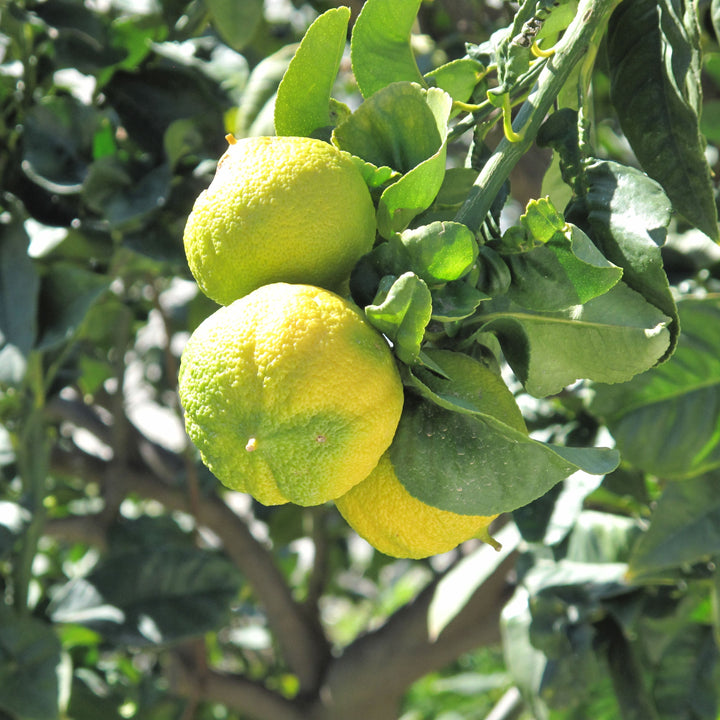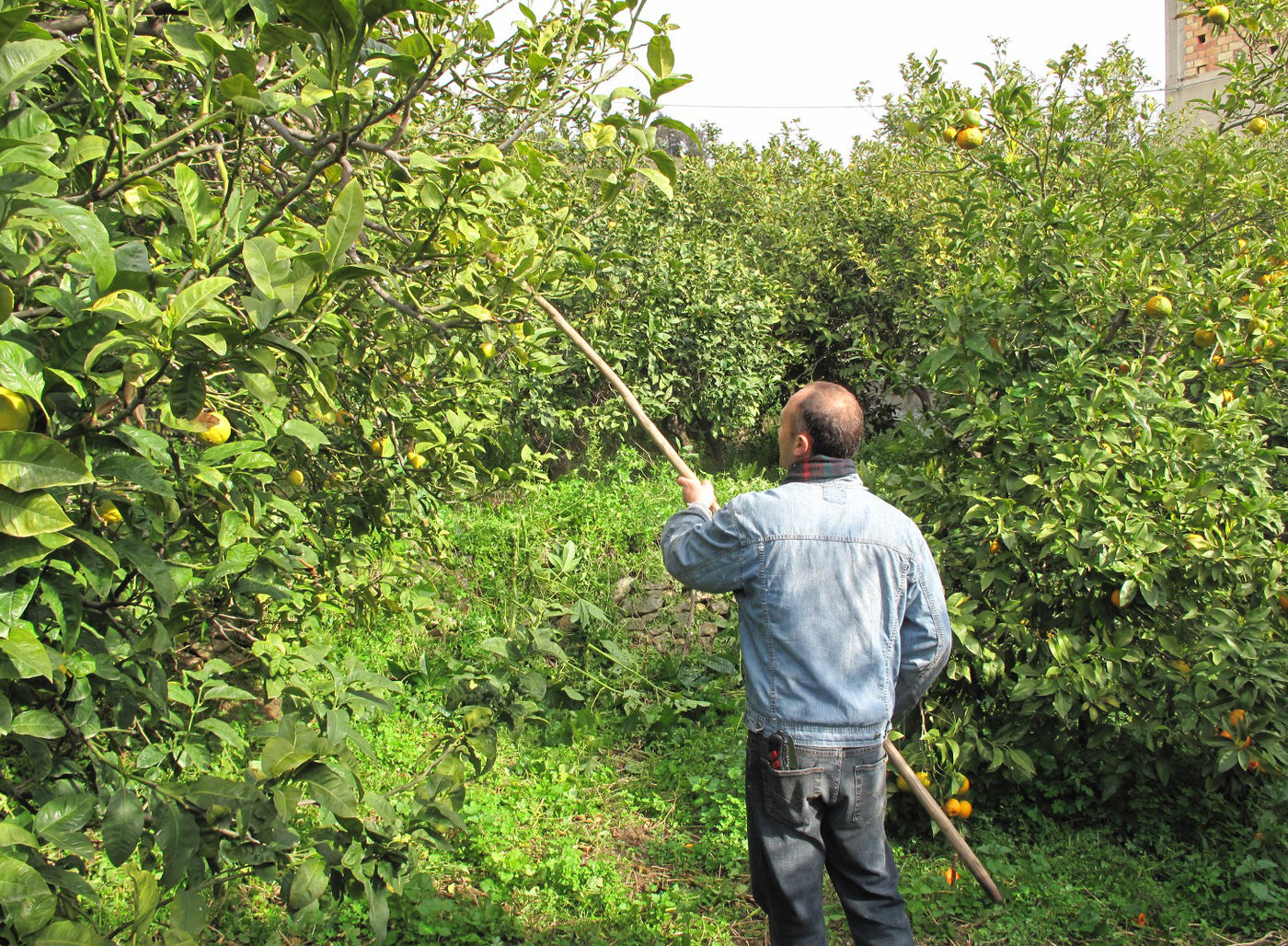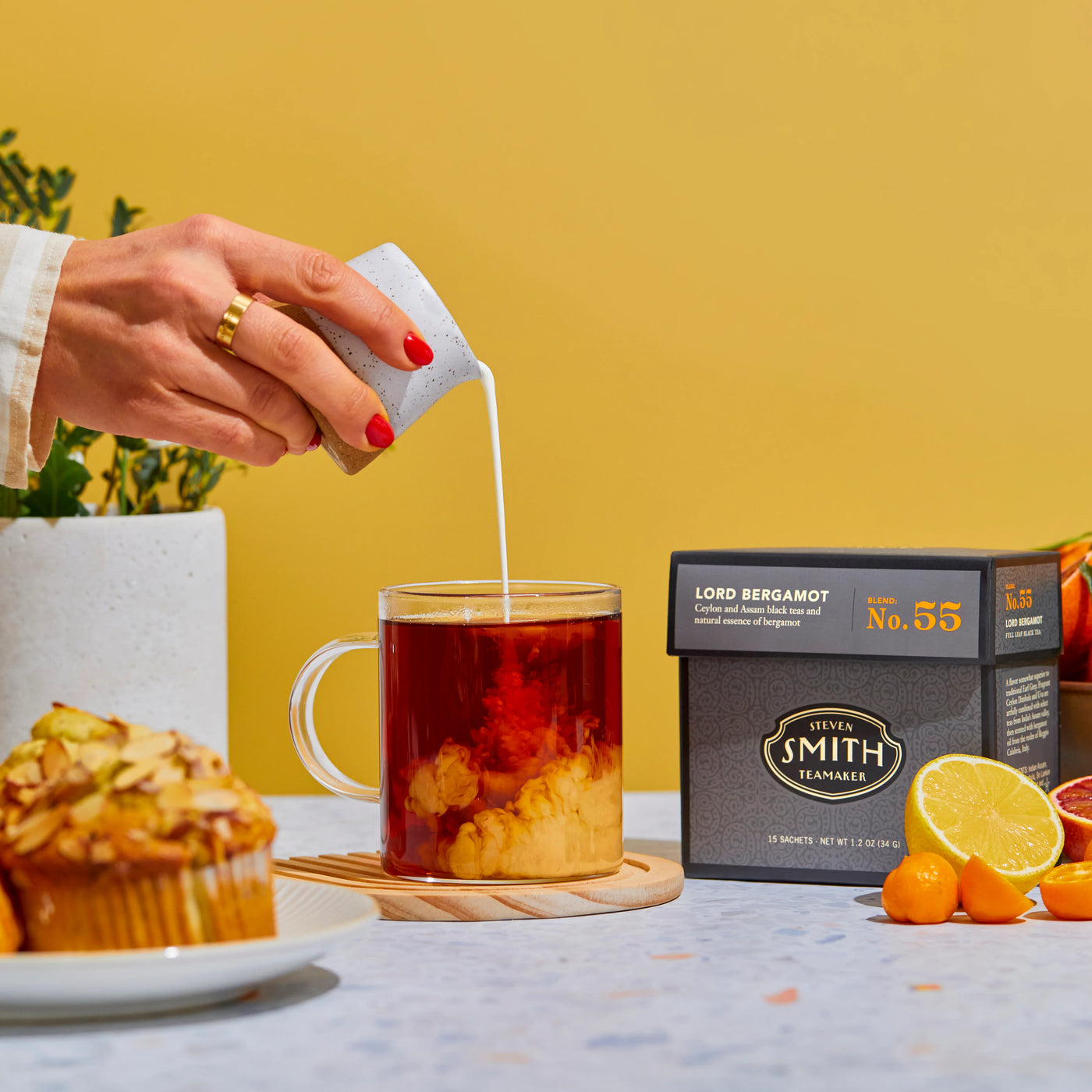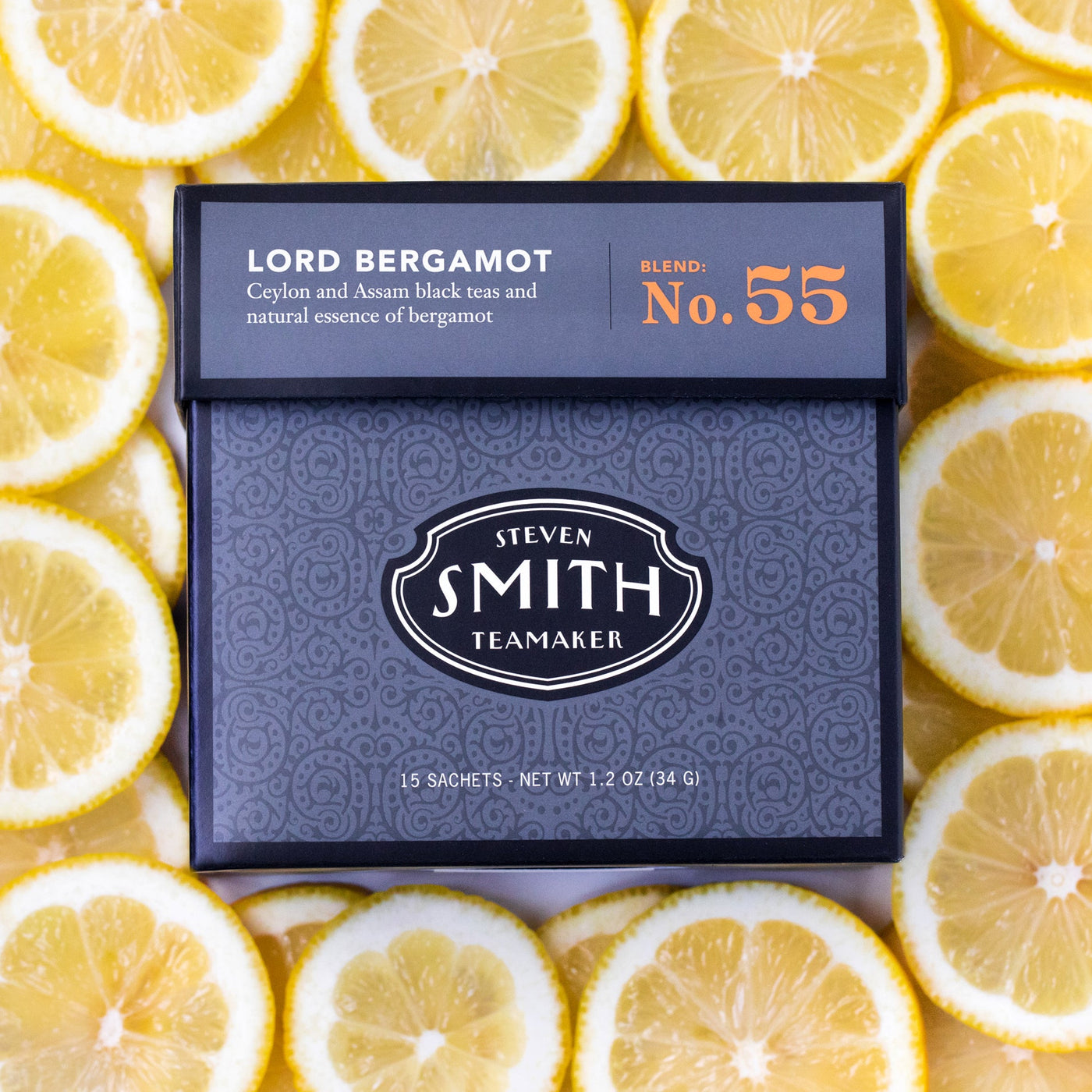Bergamot is a citrus fruit grown in small family groves in Reggio Calabria, Italy. The fruit is the color of a lime and the size of a large orange. Bergamot is picked when ripe in early winter, and the thick peel is removed and pressed like an olive to extract its essential oils. The distinctive flavor and aroma has nuances of lavender, lemon and spice, and brings a beautiful floral element when combined with black tea.



What is Bergamot?
We source bergamot oil from Reggio Calabria, Italy for its nuance and variety of aromatics compared to other sources of bergamot. In 2000, Steve Smith forged a relationship with the same farmer of bergamot fruit that we continue to work with today. Once the bergamot is harvested, the fruit is washed and peeled, constantly being sprayed with water which creates an essential oil and water emulsion. To isolate the essential oil, the emulsion is centrifuged.
We receive samples of bergamot oil just after the harvest season in January. Bergamot can have a slightly grassy or lemony flavor, but we look for a sweeter, more grapefruit-like citrus flavor that is rounder and softer. Through smelling, diluting in water for tasting and sampling combined with our teas, we determine the batch to use. Many bergamot oils contain preservatives to keep the oil from breaking down. We sacrifice a shorter shelf life to maintain a preservative-free blend.

Earl Grey Origins
The tea that put bergamot on the map. Earl Grey is the number one flavored tea in the world, with origins dating back about 300 years. Originally, tea producers may have cut a bergamot fruit in half, spooned out the inside, filled the peels with tea leaves, and wrapped the tea-filled peels back into a ball to flavor the tea. Earl Grey is known for its refined air and sophisticated flavor profile, but is beloved by most tea drinkers around the world. As with most tea blends, not every Earl Grey is created equal and can differ based on the quality of the black teas and bergamot flavor added to the blend.

Lord Bergamot
We created Lord Bergamot to be classic and traditional with a clean, bright bergamot flavor. Many think more bergamot is better in Earl Grey teas. We tend to take a “less is more” approach with Lord Bergamot where the naturally bright and fruity flavors in the Indian and Sri Lankan black teas are coaxed out by the slightest hint of bergamot oil. The tea base is often overlooked in your typical Earl Grey tea. Not with us. We use a blend of Sri Lankan Ceylon and Indian Assam black teas. Ceylon adds pungency and a sharp bite, which plays on the citrus notes in the bergamot oil while Assam gives body and astringency to help balance the rest of the blend. When you have great tea, you don't need a heavy hand with bergamot. It’s a delicate balance, and one we don’t take lightly.
For non-traditional bergamot experience, we recommend trying our Rose City Genmaicha green tea blend, our twist on a Japanese genmaicha (genmai or toasted rice) tea with sencha, Mao Feng green tea from China, rose petals and a touch of bergamot oil.